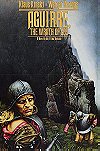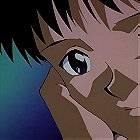Aguirre, The Wrath of God
Aguirre, The Wrath of God, directed and produced by Werner Herzog, stars Klaus Kinski, Peter Berling, and Helena Rojo. The film was released in 1972. I watched the film on the twenty fifth of November in my room on my computer. The film is loosely based on the events of Lope de Aguirre, and inspired by Gaspar de Carvajal’s tellings of an Amazonian expedition.
The film’s plot covers the events of an expedition, which is ordered by Gonzalo Pizarro, that is supposed to find the mythological city of gold, El Dorado. The adventure starts off terribly once one of the rafting crews is trapped in a whirlpool, and they cannot be saved once the rest of the expedition sees that they are killed by unknown attacks. This is the catalyst of a conflict between the lead commander, Pedro de Ursua, and second in command, Lope de Aguirre. Ursua wants to return to Pizarro, but Aguirre wants to stay on the expedition to find El Dorado. Aguirre wins this conflict and declares Don Fernando de Guzman as the leader of the expedition and Emperor of the New World. The expedition continues, yet disaster strikes again when Guzman is strangled dead near the outhouse on the house. Aguirre becomes leader, and his first order of command is to kill Ursua in the forest. As the expedition continues, the group is being picked off by the natives and most of the men are hallucinating. The raft is overrun by monkeys and Aguirre is the only one left alive as he talks about ruling the world and how he is the Wrath of God.
Many of the figures in the movie are real such as Aguire, Ursua, the missionary Gaspar de Carvajal, and Gonzalo Pizarro. However, there are many figures in the movie that are fictional. Herzog, the director, used the characters only has a creative vessel. Aguirre’s intense and sociopathic personality is represented well in the movie. The conflict between Ursua and Aguirre happened during the actual expedition and in the movie. Aguirre also mentions at the end of the movie that he will conquer Spain and Mexico, which refers to when Aguirre rebelled against Philip. His daughter, who was also in the expedition, plays a big role symbolically during the movie. She helps buffer Aguirre’s personality.Gaspar de Carvajal, however, plays a big part in the movie, but was not actually in the expedition. Herzog created the story because he read book on historical adventures. The story is a fictitious telling of the expedition because the events are loosely based on the actual expedition, yet many of the scenes are realistic for the time period. An example would be the scene where the missionary, Gaspar, is trying to convert natives to Christianity, which represents the power of the Catholic Church in Spain during the 15th and 16th centuries. Also, the treatment of slaves plays a role in the movie, and slavery was a big part of society during the colonial era. When the expedition group is trudging through the mud during the beginning of the film, Aguirre and a few other of the explorers are tugging and yelling at slaves to help carry Ursua’s wife across the mud bank. This treatment was typical towards slaves. Another occurrence is during the trial for Ursua when he pays the slaves. His wife, Inez, objects to the claims saying that back home she payed her slaves all the time. However, Gaspar proclaims that they will forgive her misconception representing the way . One the slaves, Balthasar, talks about how he once was a prince and no simple native could even look at him. However, he mourns how those days are gone. Also, the only African slave of the group, Okello, talks about how Pizarro told him to go on the expedition just so the natives could be intimidated by his skin color. One inaccuracy was the use of German as a language since the expedition group was spanish. This is most likely because the film was made by a German director. Some of the fictional qualities of the film could be because the director Werner Herzog’s screenplay was written in two and a half days, and was vomited by a drunk teammate on his soccer team.
The Movie was set during the 15th and 16th centuries on the Amazon River. The locations were depicted very realistically since the movie was filmed in the Ucayali region, which is on the Amazon River. The lush vegetation, rapid rivers, and arduous mountain passes fit a typical description of the Peruvian rainforest. The events of the movie were over the course of a month. Werner Herzog is very accurate in his depictions of the people and the setting. Many of the natives lived in straw pyramid huts, and wore barely any clothes except for straw dresses and hats. The expedition group wore striped shirts under their iron armor. Their furnishings were very scarce and the group slept on the ground. A good example of the scarcity of furnishings in the film was when Guzman sat on a velvet chair and complained that it was not a glorious chair to sit on. The slaves of the expedition wore thin cloth. The food that the expedition ate was the fish and the fruit they found on the mainland, and the expedition quickly ran out of salt and other supplies. Salt was a very luxurious item during the Late Middle Ages, and the absence of it really affects the soldiers during the film. The weapons the natives used were long spears and arrows, which the natives used because the only resources most tribes had were stone and wood for making weapons.
The film’s acting really sells the reality. Klaus Kinski projects the sly and evil character that Aguirre has through his walk and smug looks when the camera is close to his face. He really gives into the rule, and the outcome leaves the viewer with a reaction similar to the people on the expedition. Most of the actors that played lesser members of the expedition group really sold the fear they had for Aguirre and the desperation for food and shelter. Also, Del Negro, who plays Gaspar, really makes the viewer think he is just as selfish as everyone else in the crew. Even though the majority of roles were acted really well, some roles were just average and didn’t really add anything to the plot. The plot was paced very well having a nice balance between detail and action. The climax of the story leaves the viewer wondering how did Aguirre survive through the scarcity of food, but setting realism aside and analyzing the symbolic themes of the ending, then Aguirre reveals himself to be the Wrath of God by surviving the plagues of the journey. Through symbolism and beautiful cinematography, the viewer’s attention should not draw away from the screen. Those who are looking for an exact representation of the events during the expedition for El Dorado will be disappointed, but if you are fine with a well told story regardless then open this film with open arms. Some improvement in the acting would really make this film better. I would recommend this film to anyone who enjoys to think, and not just stare blankly at the screen waiting for another action sequence. If you appreciate a great lead actor, excellent storytelling, and vivid cinematography, then you have to watch this movie because it delivers all of those attributes.
|
Points: 253
CLU10123Add CLU10123 as a friendCLU10123 will be notified and will have to accept this friendship request, to view updates from CLU10123 and their ratings you must follow them. |
Lists
Recent reviews
All reviews -
Movies (1)
Aguirre: The Wrath of God review
 Posted : 12 years, 5 months ago on 26 November 2012 09:42
(A review of Aguirre: The Wrath of God)
Posted : 12 years, 5 months ago on 26 November 2012 09:42
(A review of Aguirre: The Wrath of God) 0 comments, Reply to this entry
0 comments, Reply to this entry
Movies
Top rated |
 My movies page My movies page Rated 1 movies Rated 1 movies |
 Login
Login
 Message
Message
 Home
Home 1 Reviews
1 Reviews Collections
Collections